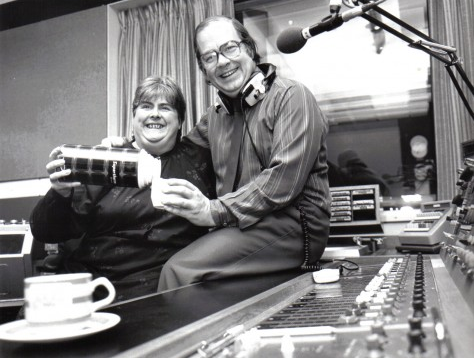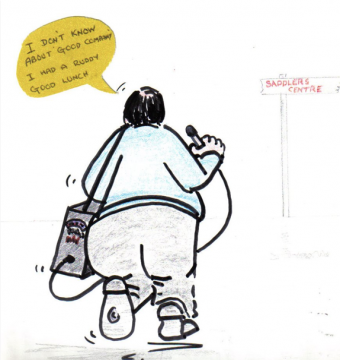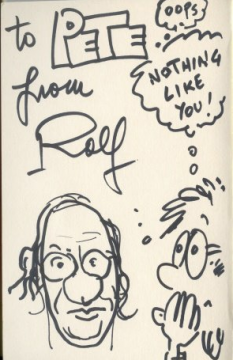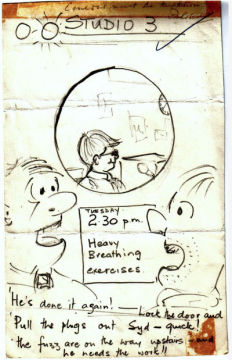Photos by Ian Collins, no reproduction without permission.
Video editor Ian Collins took photos of various pieces of post-production technical kit before the fixtures and fittings of Pebble Mill were sold off in auction in Autumn 2004.
These photos are of a Nagra audio recorder. They were used in the PSC (portable single camera) edit suites until the 1990s. They were very rugged and reliable.
Please add a comment if you can add information about how the Nagras were used.
The following comment was made by recordist Murray Clarke about location Nagras: ‘Of course the Nagra 3 and 4s were the standard sound recording machine for location recordists for many many years before DAT became more common. I bought my mono Nagra 3 in 1971 for a cost of around £3200. I took it up to Yorkshire for a couple of episodes of all Creatures Great and Small – and it rained solidly for a fortnight!!!. My ‘over-qualified’ boom op and assistant was Dave Baumber, then the Dubbing Mixer at the newly-built Pebble Mill studios.’
Christopher Hall adds the following information: ‘This is a Nagra T. T for twin capstan. They had a computer controlled synchroniser which could chase timecode from the VT machine in an edit suite at high speed. I went on a factory course for these in the late 1980s. We spent a whole day learning how to repair the motors, and when we asked how long they usually lasted for a discussion in French and German revealed that they didn’t know because none had stopped yet!’
Paul Vanezis: ‘I tracklayed 10 episodes of ‘Chalkface’ and 8 episodes of ‘Specials’ on a Nagra T…’
Peter Poole: ‘This must be the finest tape recorder ever made. I spent ages trying to get film unit to buy one for the transfer suite. It never happened. But after seeing the price I could see why!’
Pete Simpkin: ‘Totally agree with you Peter……I used one to great effect recording a nightingale for a Radio Birmingham programme in the 70s. The standard reporter’s Uher was not up to the job and the simple version Nagra gave level control, mixing of two mics AND ‘off tape’ monitoring!’







